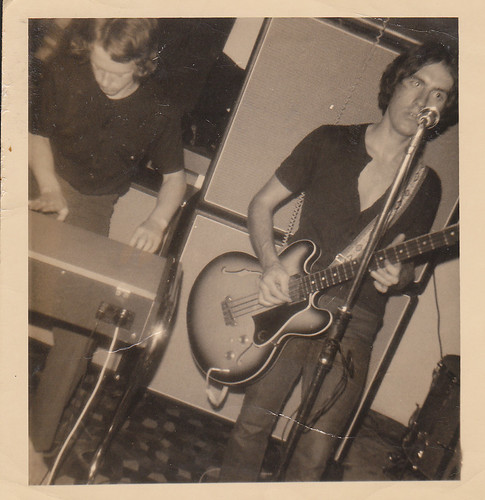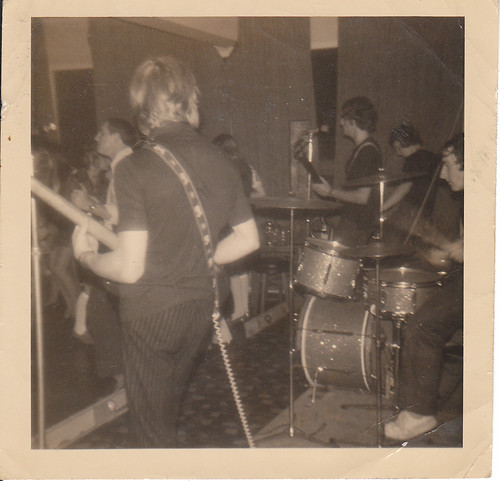Formed after the demise of Mission Impossible. The name was selected by Robert andwas more fitting with the style of music they were now playing, namely: (Cream, Hendrix, Sabbath, Deep Purple, Who, etc.). Mike was instrumental in changing the direction of the band, but drummer Robert was a Keith Moon fanatic, so the new direction suited him well.
The new band now consisted of: Rob Robins - (drums/vocals); Steve Newman (Bass); Russell Dodge (keyboard) & Mike Harwood (lead guitar/vocals) A short time later, Paul Wakeling (who'd been regularly Blues jamming with Mike), was invited to join as Lead vocalist/Harmonica player.
At the time, they were still playing mostly hits of the day, but with Mike's influences of Hendrix, Clapton and blues in general, it soon helped them shape into a hard rock band. For a while there was a funny transitional period when they were playing both pop and rock material, but their new identity began to take shape.
Rehearsals took place at Steve Newman’s parents cottage in Carharrack and not long after, their first gig took place at Room at the Top, Redruth on Christmas Eve 1968.
In 1970, Paul wanted to take up rock drumming and after buying his first kit from smugglers cottage, Portreath, Paul left Society's Child with the band reverting to a four-piece.
In early 1971 Russell left the band to go to University while the band now became a three-piece, before picking up vocalist Clive (Sid) Brown after a gig at the Mandalay Club at Budock. Clive said he could sing and after trying him out he joined the band, forming the line-up that would become a hard working 6/7 night a week gigging band.
While they remained a popular live draw, the increase in the amount ofkit required, meant they were becoming restricted in the venues they could play. A heavy rock outfit with lightshows also didn’t really fit the bill for the local village hall dance!
Mike had been jamming with Nigel Uren and was asked to join The Parlour Band.
Mike left Society's Child in early 1971 and while they continued for a few months without him, trying to find a suitable lead replacement proved difficult, until they finally called it a day around the Spring of 1971.
Russell later returnedto the South West, teaming up once again with John Dunstan to perform as a duo playing the folk and club circuit.








With thanks to Paul Wakeling for the photographs

|

